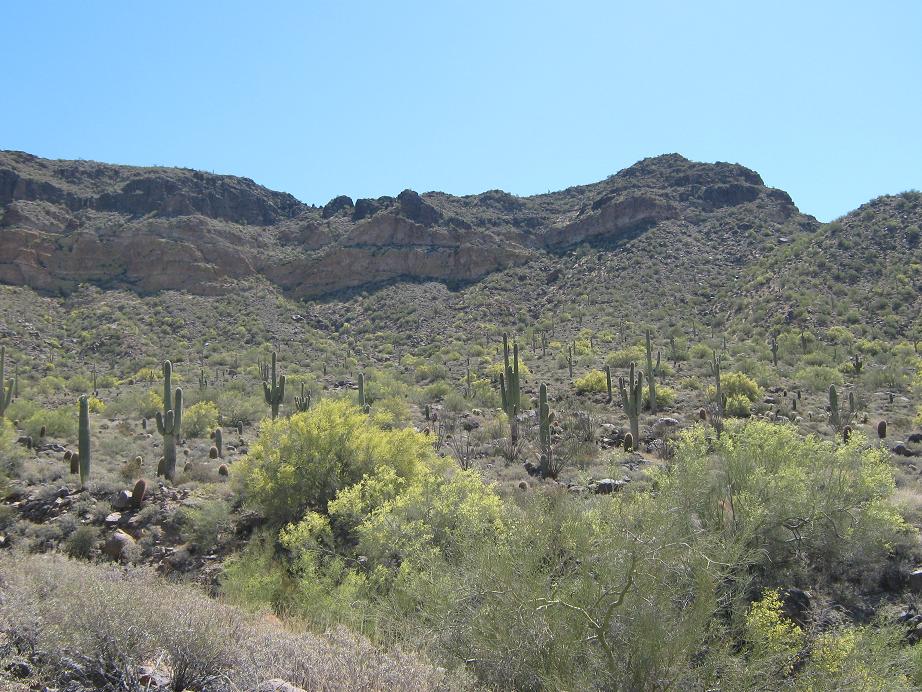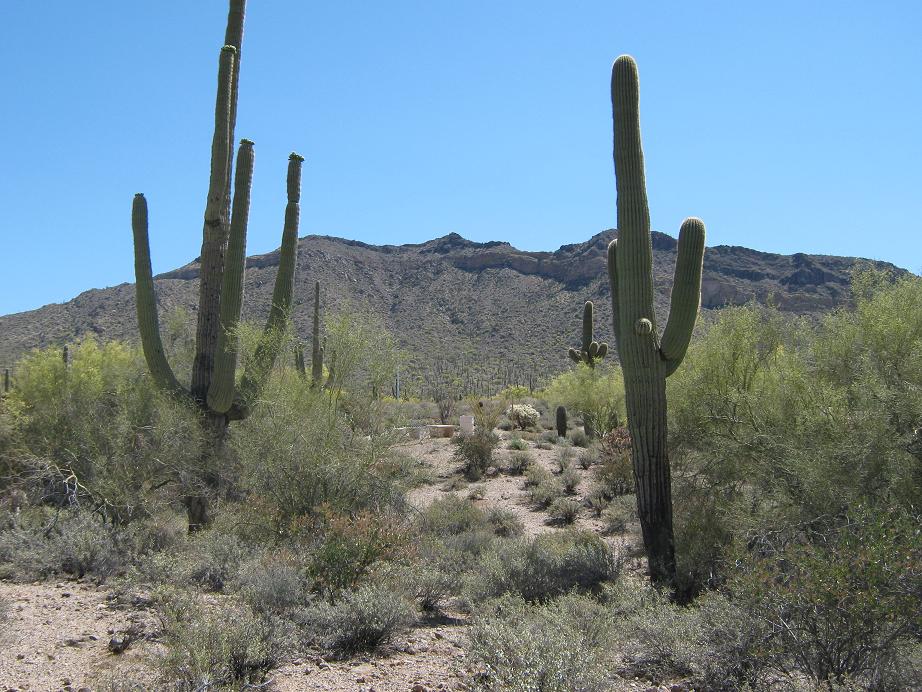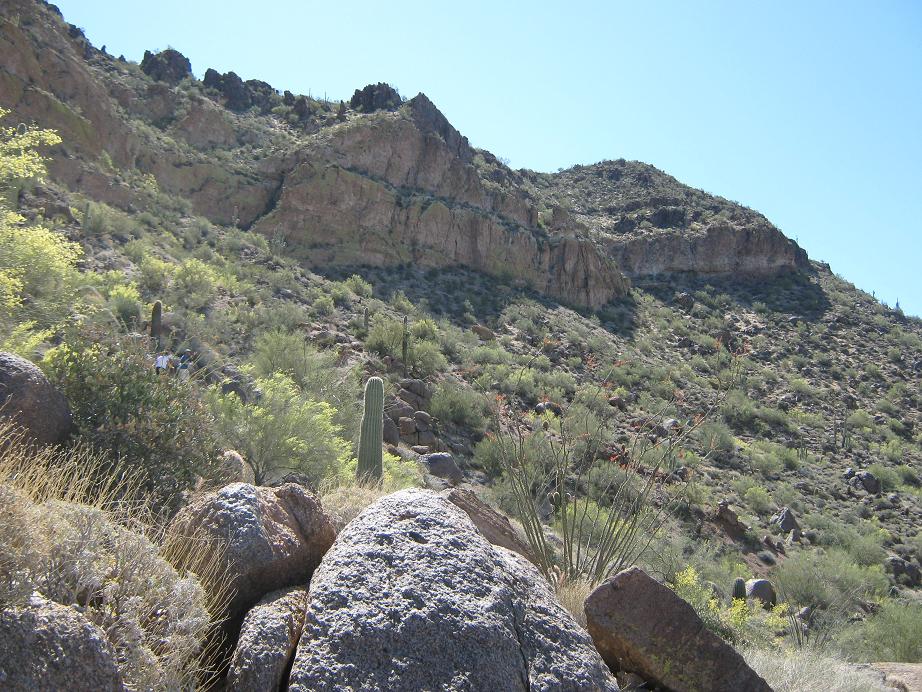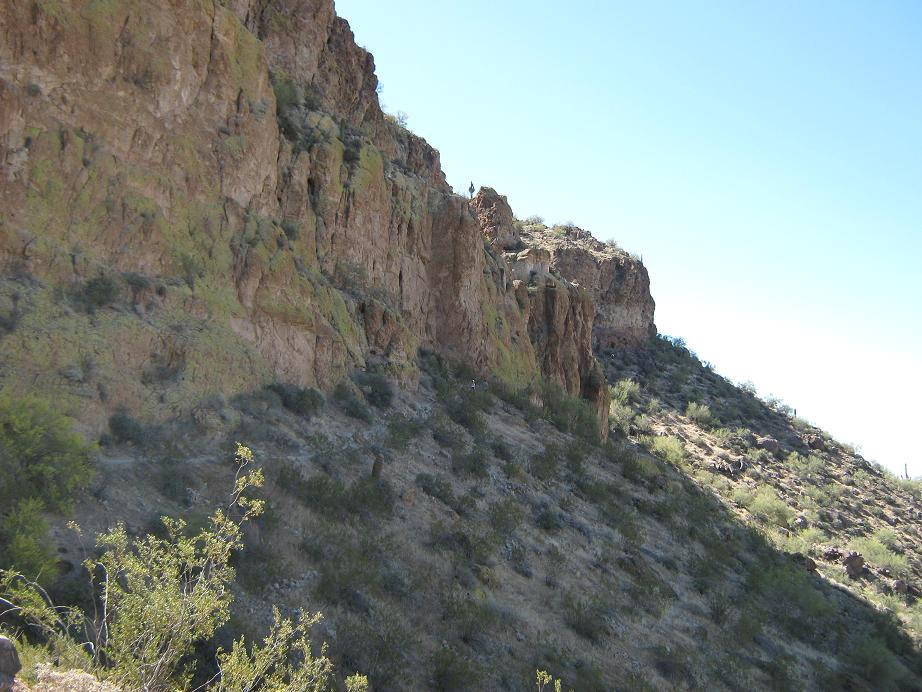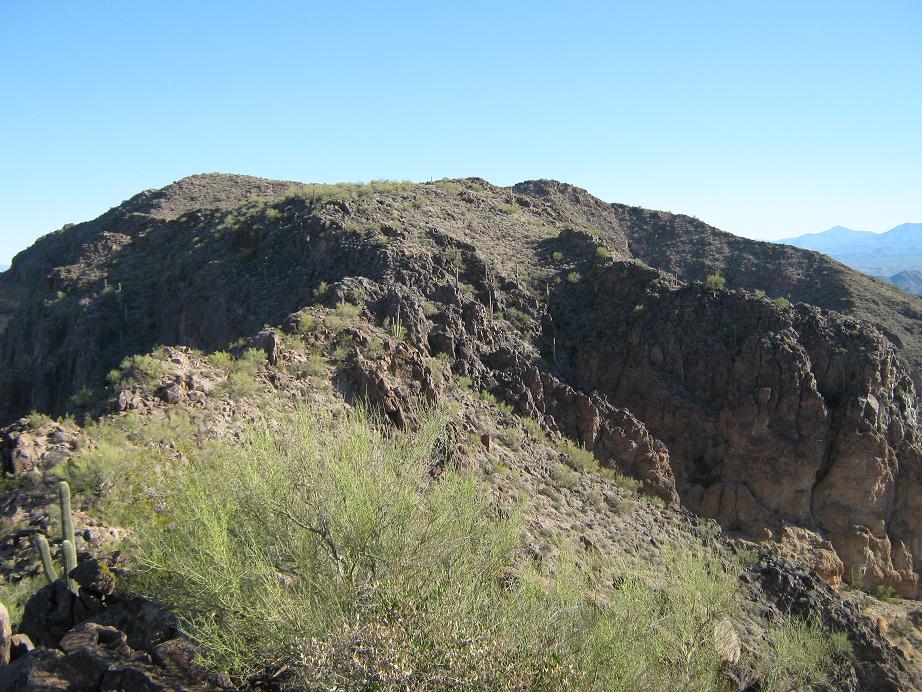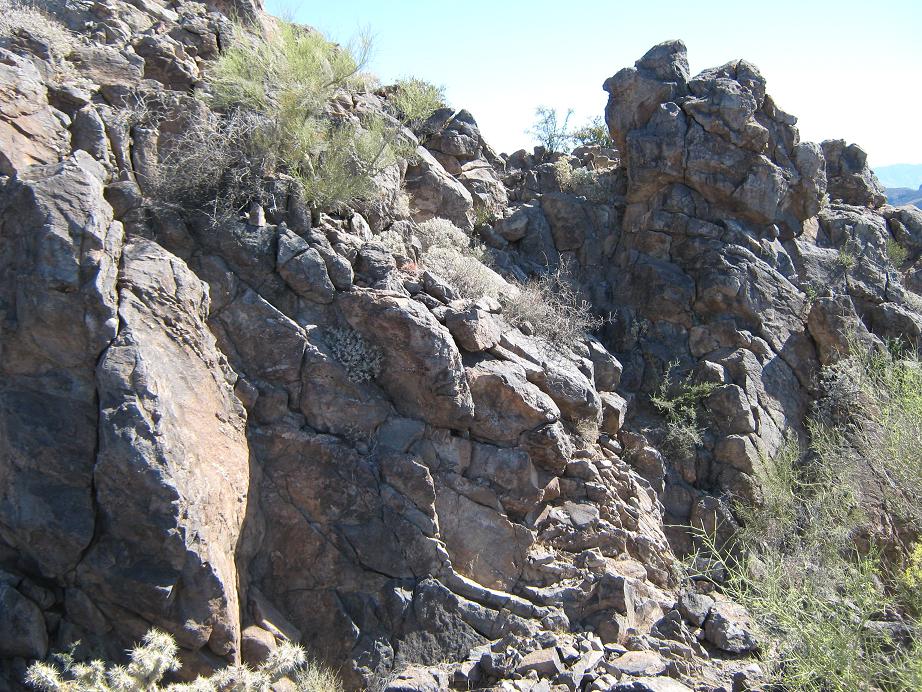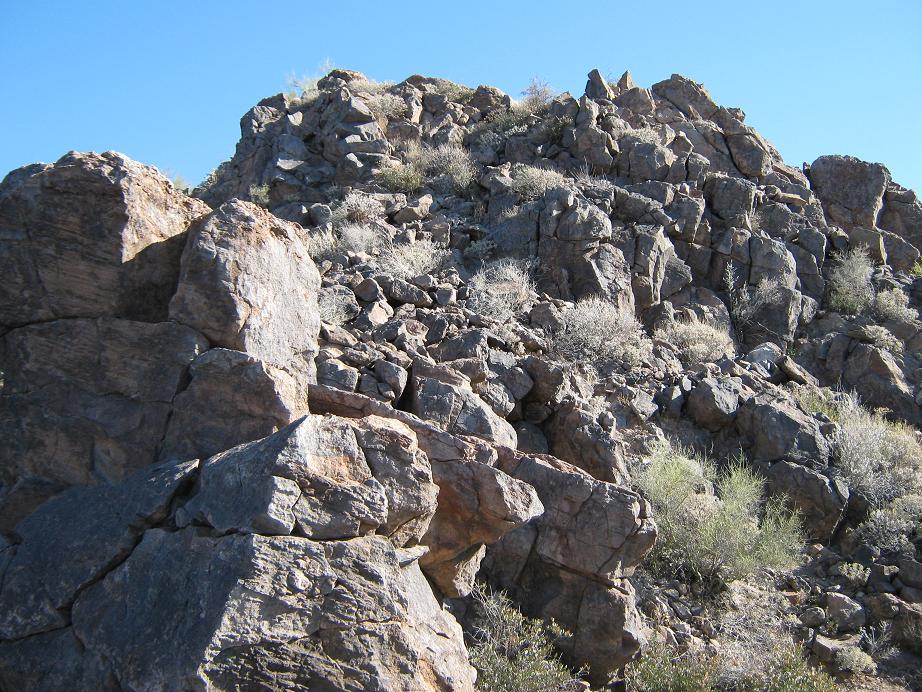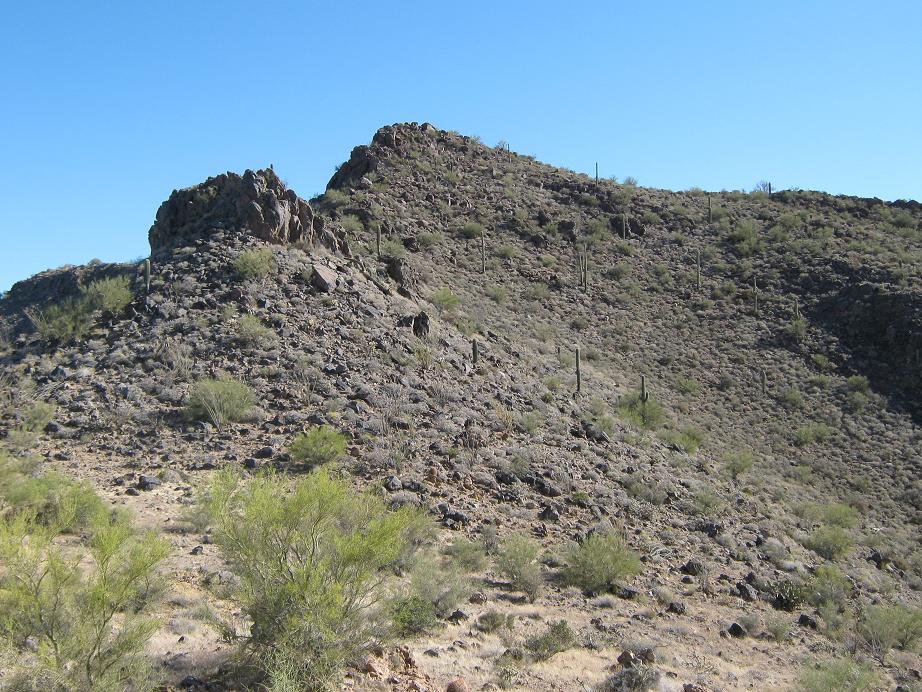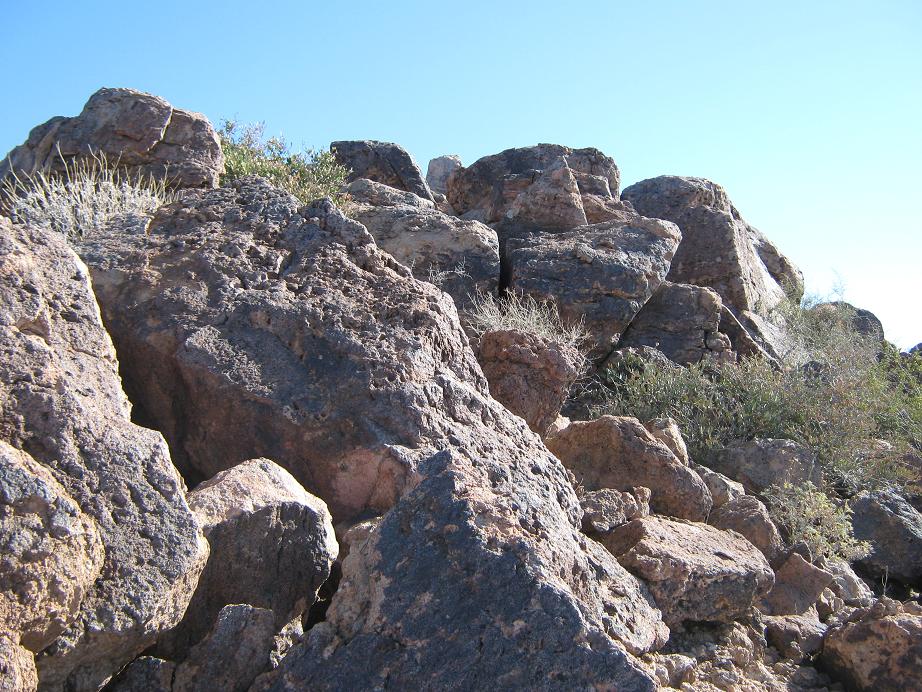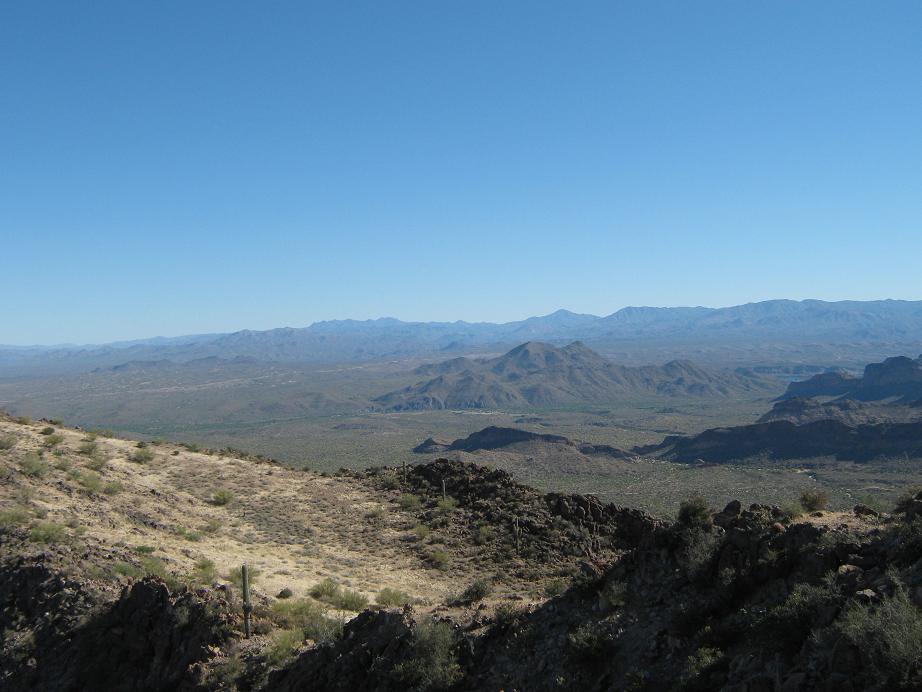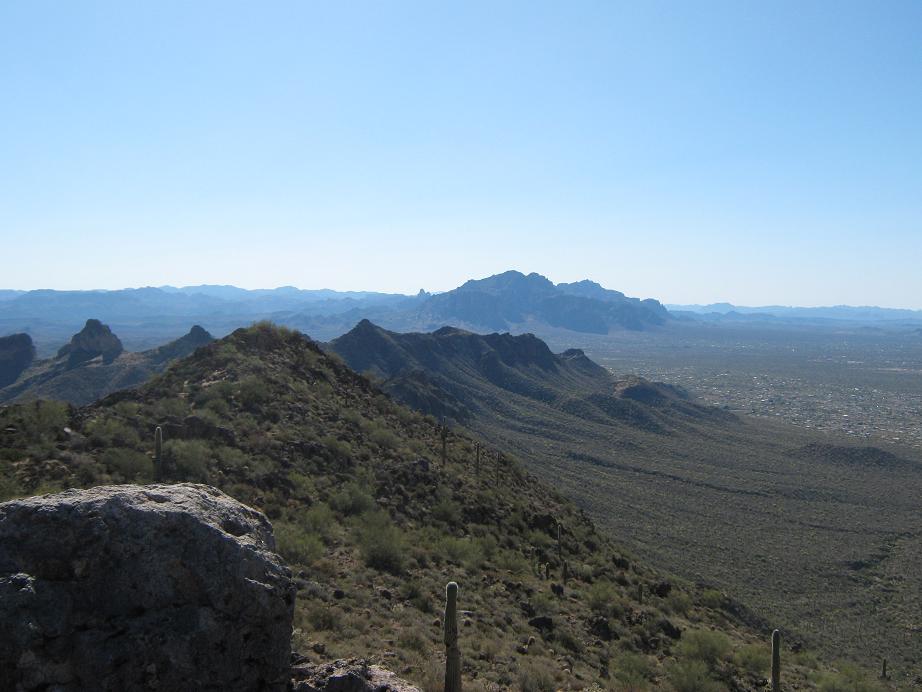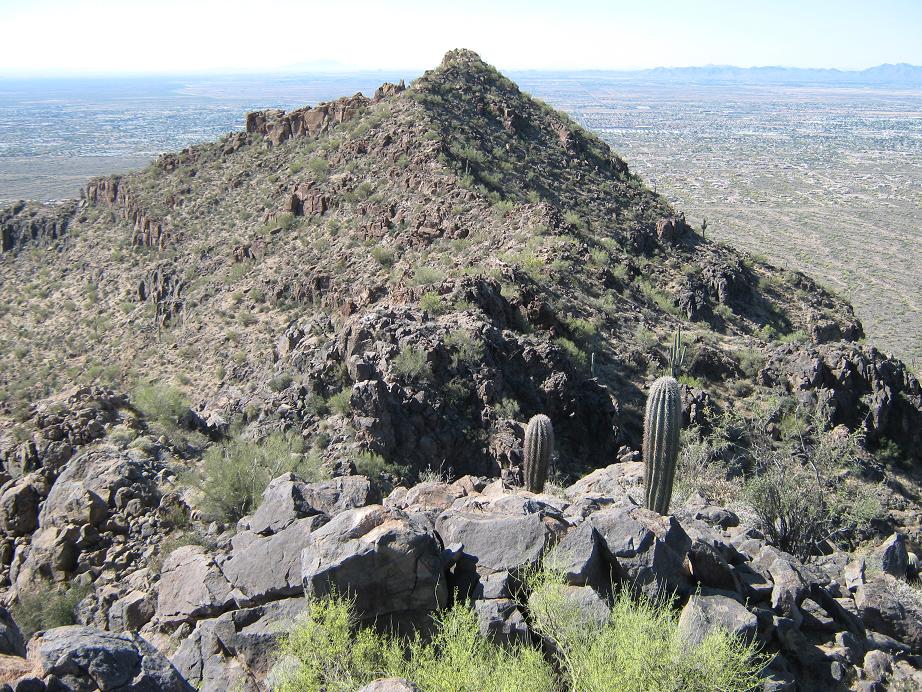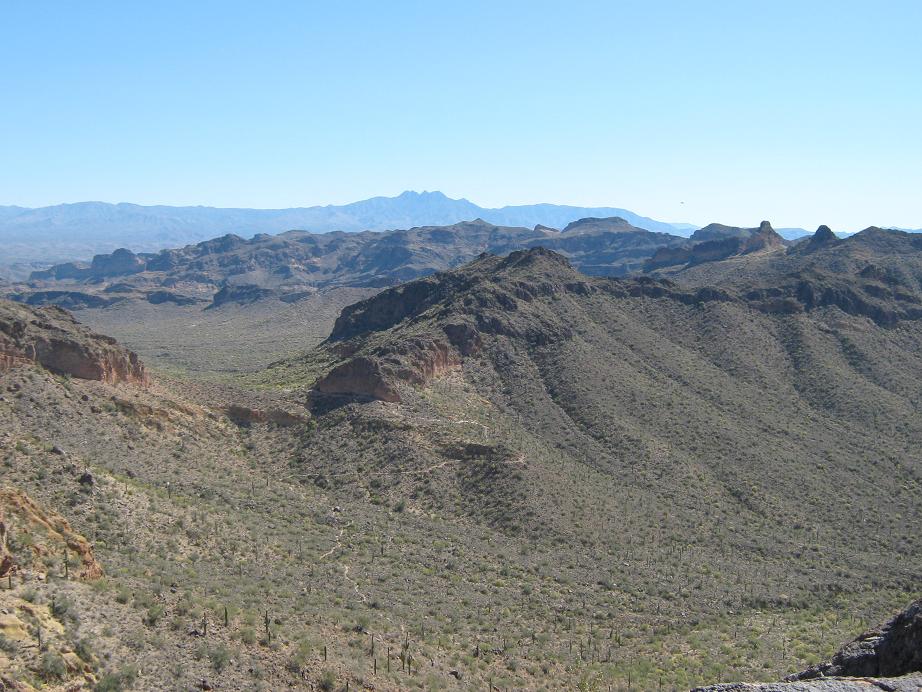
The Mountains of Arizona
• www.surgent.net
|
| Pass Mountain |
• Goldfield Mountains • Tonto National Forest • Maricopa County |
|
Date: May 1, 2011
• Elevation: 3,312 feet
• Prominence: 1,147 feet
• Distance: 5 miles
• Time: 3 hours
• Gain: 1,500 feet
• Conditions: Sunny and clear
Pass Mountain is in eastern Maricopa County, north of Mesa. From vantage points in Scottsdale and Mesa, Pass Mountain is easy to spot because of a distinct white "stripe" that runs across its west-facing slopes. This stripe is a cliff band, and includes its main attraction, a grotto called Wind Cave. Wind Cave (and Pass Mountain) are within the Usery Mountains Regional Park. Technically, Pass Mountain is part of the Goldfield Range. The Usery Mountains are a bunch of little hills west of Usery Pass Road (Ellsworth Road), the road being the "boundary" between the two ranges.
I hiked to Wind Cave a few times during the 1990s, including a New Year's Day hike with my parents in 1998. In 2003, B. and I hiked to Wind Cave, then past it, following a rougher trail up the rocky slopes until we either encountered cliffs, or actually got somewhere. We had no plan nor map. However, we were able to scamper up the rocks to the prow-shaped south summit of the mountain, elevation 3,127 feet.
For today, I wanted specifically to hike to the summit, elevation 3,312 feet, a mile north of Wind Cave. I had maps and information with me. I was pushing my luck with the weather, as it was May, but we had a cool weekend, and today started out nice, with highs expected to be only in the 80s. From our place in Scottsdale, I drove to Ellsworth Road via the Loop-202 freeway. At the park entrance kiosk, I paid $6 and drove to the Wind Cave trailhead parking lot, arriving about 6:45 a.m. The lot was mostly full, which was not surprising. I am sure lots of other people saw the great weather and got out for a hike just like I did.
It had been windy the past day, enough to blow out the haze, the humidity levels were in the single percents and the sky was a beautiful blue. I started hiking at 7 a.m., following the Wind Cave Trail. Other than a group of three women ahead of me, I saw no one until I was close to the Wind Cave itself. The trail is in fantastic shape. It runs north for about a half-mile, in and out of a few arroyos, before bending right (east) and up a slope, aiming for the cliffs. When it reaches the cliffs, the trail bends right again, now heading south, and hugs the cliffs before a couple more switchbacks feed the trail to the base of Wind Cave. To here, it's about 1.5 miles and 800 feet of gain.
I made excellent time, never stopping, covering this segment in 30 minutes. There were a half-dozen people up here, not as many as I expected. It was still cool, and we were still in the shade. I took a five-minute break to have a drink before resuming my hike. Wind Cave is often full of bees. I actually stayed a little outside the cave itself
Past Wind Cave, the trail continues, marked by a sign warning that you travel at your own risk beyond this point. The trail is noticeably rougher than the main trail, but by most standards, it is still a very good trail. There's a short eight-foot "cliff" section to clamber up, some other steep sections, but overall, it leads straight up to the main ridge. In the few spots where it gets confusing, small white arrows are painted onto the rock to help. A quarter-mile above Wind Cave, the trail essentially ends at the main ridge, north of the South Summit.
I turned left and started the one-mile trek northward. Immediately, there is a rocky, somewhat tricky traverse through a series of small and large pinnacles. The first hundred yards went easy, picking my way through the rocks, often staying on the very ridge itself. The route then descends about 40 feet to a low point. After weaving through a couple small obstacles, the main crux of the hike comes into view: a twenty-foot chute that looked mostly vertical even from up close.
I walked to the base of the chute and saw good handholds and footholds, plus little six-inch ledges that made the actual climb very easy. Above this, I clambered over a notch, then carefully down about six feet onto more rocky terrain. I went left around one pinnacle, then came upon the second big rock pile, another twenty (or so) feet of vertical to gain. But the rocks here leaned back and I scooted up this section quickly. After a couple more small obstacles, and I was done with the rocky traverse section. I was now on broad rounded slopes covered in low grasses and desert scrub.
Ahead of me, I could see a big rounded hump, but I knew this was not the summit, so I did not get my hopes up. The route descends about 20 feet, coming to the base of the slope that would lead to the top of this big rounded ridge-hump. The vertical gain here was about 80 feet, and very easy. Given the abundance of grass (and the potential for snakes), I rock-hopped as much as possible to get to the top of this hump.
I continued north, losing the elevation again as the route dropped to yet another low point, but here, I was directly below the summit, a pointed mound of large rocks. I found a scant path through the first set of rocks, bypassed a fallen saguaro, then found another path through the final series of large rocks to worm my way to the top, the last thirty feet requiring a couple easy moves to get around obstacles. And there I was, at the top, all to myself. It was 8:30 a.m., a 90-minute climb from my truck, and about an hour since leaving Wind Cave.
Given the pristine conditions, I had million-dollar views in all directions. The air was so devoid of moisture I could make out details on distant mountains, and even see the faint blue outlines of peaks way off on the horizons, peaks normally blocked by haze and dust. South was the sprawl of Mesa and Gilbert, with the Santan Mountains visible, and even distant Table Top. West was Phoenix and the Estrella Mountains. The entire Mazatzal Range was visible, including Mazatzal Peak itself way off to the north, the conical summit of Mount Ord, and the Four Peaks. Looking east into the rising sun was the big wall of the Superstition Mountains, and beside it, Weavers Needle. The views were astounding, and worth the effort. The summit logs were filled in but still averaged to just ten or twenty visitors per week in winter, a low number given this peak's location to town. In summer, very few people hike it, for good reason.
The hike out went well, including the rocky sections, which went easier since I knew where to go to save time. Once back on the trail, I saw the first person I'd seen since leaving it about an hour ago. Even back at Wind Cave, there were few people. I thought about relaxing here, but the bees suggested I find another place to relax. With better lighting, I took more photographs of the trail and the countryside, including the desert below, covered in a sea of yellow flowers put forth by the palo verde trees. My sinuses weren't so happy, though.
I was back to my truck at 10 a.m., a three-hour hike. Given the up-and-down nature of the ridge, I figured a net 1,300-foot gain to the summit from my truck, and about another 200 feet of accumulated gain along the ridge. I took time to relax and take more photographs before exiting the park. I am glad I came back after so many years, and Pass Mountain proved to be a delightful gem, a peak requiring some real effort to gain, a respite from the crowds below.
|
|
